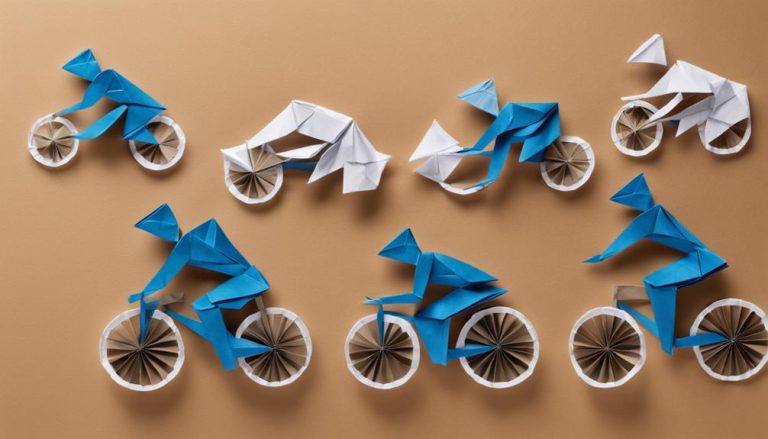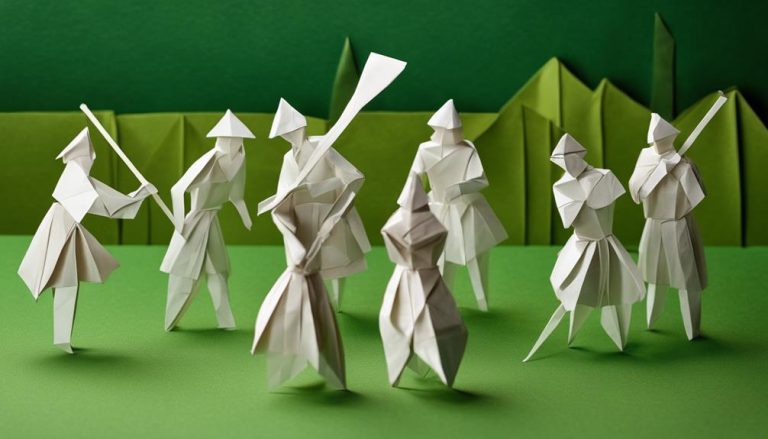General Rules of Sport Stacking
Sport stacking is like a complex puzzle waiting to be solved, with each move needing precision and finesse. As you navigate through the general rules of this unique sport, you'll find yourself unraveling the intricacies of competition categories, equipment specifications, timing regulations, stacking techniques, penalty rules, and disqualification criteria. But before you can stack up your expectations, there's one crucial aspect that may surprise you.
Competition Categories
When competing in sport stacking, you can participate in various categories based on your skill level and age group. Whether you are a beginner or an advanced stacker, there are divisions tailored to suit your level of expertise. Skill levels are typically categorized as novice, intermediate, and advanced, allowing stackers to compete against others with similar abilities. Age groups also play a significant role in competitions, ensuring fair play and camaraderie amongst participants. You will find yourself stacking against others in your age bracket, whether you are a young stacker or a seasoned pro.
Sport stacking events take place on different scales, ranging from local competitions to international championships. Local events offer a great starting point for new stackers to gain experience and showcase their skills within their community. On the other hand, international competitions bring together top stackers from around the world, providing a platform for elite athletes to demonstrate their speed and precision on a global stage. Whatever your level or age, there is a competition category waiting for you to stack up and challenge yourself.
Equipment Specifications
To ensure fair competition and consistent performance, understanding the equipment specifications in sport stacking is crucial. Here are some key aspects to consider:
- Equipment Quality: Invest in high-quality cups to ensure durability and uniformity in weight and size, which is essential for fair play.
- Equipment Care and Maintenance: Regularly clean and check your cups for any damage to ensure they are in optimal condition for training and competitions.
- Skill Development: Practice with the same set of cups to improve muscle memory and agility, aiding in faster stacking times and better overall performance.
- Training Aids: Consider using a timer to track your progress and enhance your training sessions, helping you identify areas for improvement and monitor your performance over time.
Timing Regulations
Now, let's shift our focus to the crucial aspect of timing regulations in sport stacking, ensuring fair and accurate measurements of performance during competitions. Timing accuracy is paramount in sport stacking, where every fraction of a second counts. Consistency in timing not only determines the winner but also plays a crucial role in setting speed records. To excel in this aspect, athletes must blend speed with mental focus, crafting a strategy that allows for swift yet precise movements.
In sport stacking, timing regulations are designed to create a level playing field for all participants. The accuracy of timing devices is meticulously calibrated to capture even the slightest movements. Timing errors can make a significant difference in the final results, emphasizing the need for athletes to hone their timing skills continuously. By mastering timing regulations, athletes can optimize their performance and strive towards breaking speed records. Remember, in sport stacking, timing is not just about speed; it's a strategic combination of speed, precision, and mental focus.
Stacking Techniques
Exploring various stacking techniques can elevate your sport stacking performance to new heights, enhancing both speed and precision in your movements. To improve your skills, focus on the following techniques:
- Speed Techniques: To enhance your speed, practice quick hand movements while maintaining control over the cups. Utilize efficient motions to minimize the time taken during stacking sequences.
- Hand Placements: Pay close attention to where you position your hands when stacking cups. Proper hand placements can significantly impact your stacking speed and accuracy. Experiment with different hand positions to find what works best for you.
- Flowing Movements: Work on creating smooth and continuous movements while stacking cups. Avoid jerky motions that can slow you down and lead to mistakes. Aim for a seamless flow from one cup to the next.
- Consistent Practice: Regular and consistent practice is key to mastering stacking techniques. Dedicate time to honing your skills and refining your speed and precision. With perseverance, you can improve your sport stacking performance significantly.
Penalty Rules
So, you've stacked your cups with lightning speed, but what happens if you break a rule? Penalty enforcement in sport stacking is crucial to maintaining fair play and ensuring competition integrity. Understanding the foul consequences can make all the difference in your performance and overall ranking.
Penalty Enforcement
To understand how penalty enforcement works in sport stacking, let's delve into the specific rules and consequences that govern these infractions. When it comes to penalties, here's what you need to know:
- Fair Play: Upholding fair play is essential in sport stacking to ensure a level playing field for all participants.
- Sportsmanship: Demonstrating good sportsmanship, even in the face of penalties, is a key aspect of being a respectful athlete.
- Consequences: Penalties may include time deductions or disqualifications depending on the severity of the infraction.
- Learning Opportunity: Treat penalties as a learning opportunity to improve your skills and avoid making the same mistakes in the future.
Foul Consequences
Understanding the repercussions of committing fouls is crucial in sport stacking, as they can impact your performance and standing in the competition. Fair play is at the core of sport stacking, and any violations can result in sportsmanship penalties. Knocking over cups, starting before the signal, or using improper hand placement are common fouls that can lead to penalties. These penalties not only add time to your overall stack, affecting your speed, but they also reflect on your sportsmanship. Practicing good sportsmanship is not just about following the rules but also about respecting your fellow competitors and the sport itself. By avoiding fouls and playing with integrity, you not only improve your performance but also contribute to a positive and respectful sporting environment.
Disqualification Criteria
In order to maintain fairness and uphold the integrity of sport stacking competitions, specific disqualification criteria have been established. Here are some important points to keep in mind:
- Rule Interpretation: It is crucial to adhere to the rules set forth by the World Sport Stacking Association (WSSA) to avoid disqualification. Any misinterpretation or bending of the rules can lead to penalties.
- Skill Evaluation: Judges are trained to evaluate stacking techniques accurately. Any deviations from the standard procedures may result in disqualification to ensure a level playing field for all participants.
- Equipment Violation: The use of unauthorized or modified stacking equipment can lead to immediate disqualification. It is essential to use approved cups and mats to avoid penalties.
- Unsportsmanlike Conduct: Engaging in unsportsmanlike behavior such as taunting opponents or violating codes of conduct can result in disqualification. Respect and fair play are fundamental to the sport stacking community.
Frequently Asked Questions
Can Sport Stacking Improve Hand-Eye Coordination and Cognitive Skills?
Sport stacking can definitely enhance your hand-eye coordination and cognitive skills. It requires focus, quick thinking, and precise movements, all of which are vital for improving these abilities. Give it a try!
Are There Any Age Restrictions for Participating in Sport Stacking Competitions?
Age restrictions vary by competition levels in sport stacking. Some events have age categories, allowing participants of all ages to compete. It's a fun and inclusive activity that can be enjoyed by individuals of different ages.
How Can One Get Involved in the Sport Stacking Community and Find Local Events to Compete In?
To get involved in the sport stacking community and find local events, start by joining online groups for updates. Enhance your skills through practice sessions. Compete to challenge yourself. Did you know 5% of stackers worldwide hold world records?
Are There Any Recommended Warm-Up Exercises or Stretches for Sport Stackers?
To prepare for sport stacking, start with dynamic stretching techniques to boost flexibility and circulation. Incorporate wrist rotations and arm swings. Engage in pre-competition routines like visualization to enhance focus and performance. Enjoy the benefits of these strategies.
Are There Any Specific Nutritional Guidelines or Tips for Athletes Participating in Sport Stacking Competitions?
To excel in sport stacking competitions, remember these nutritional tips: prioritize lean proteins for muscle recovery, fuel your body with complex carbs for sustained energy, and stay hydrated throughout the day following proper hydration guidelines.






